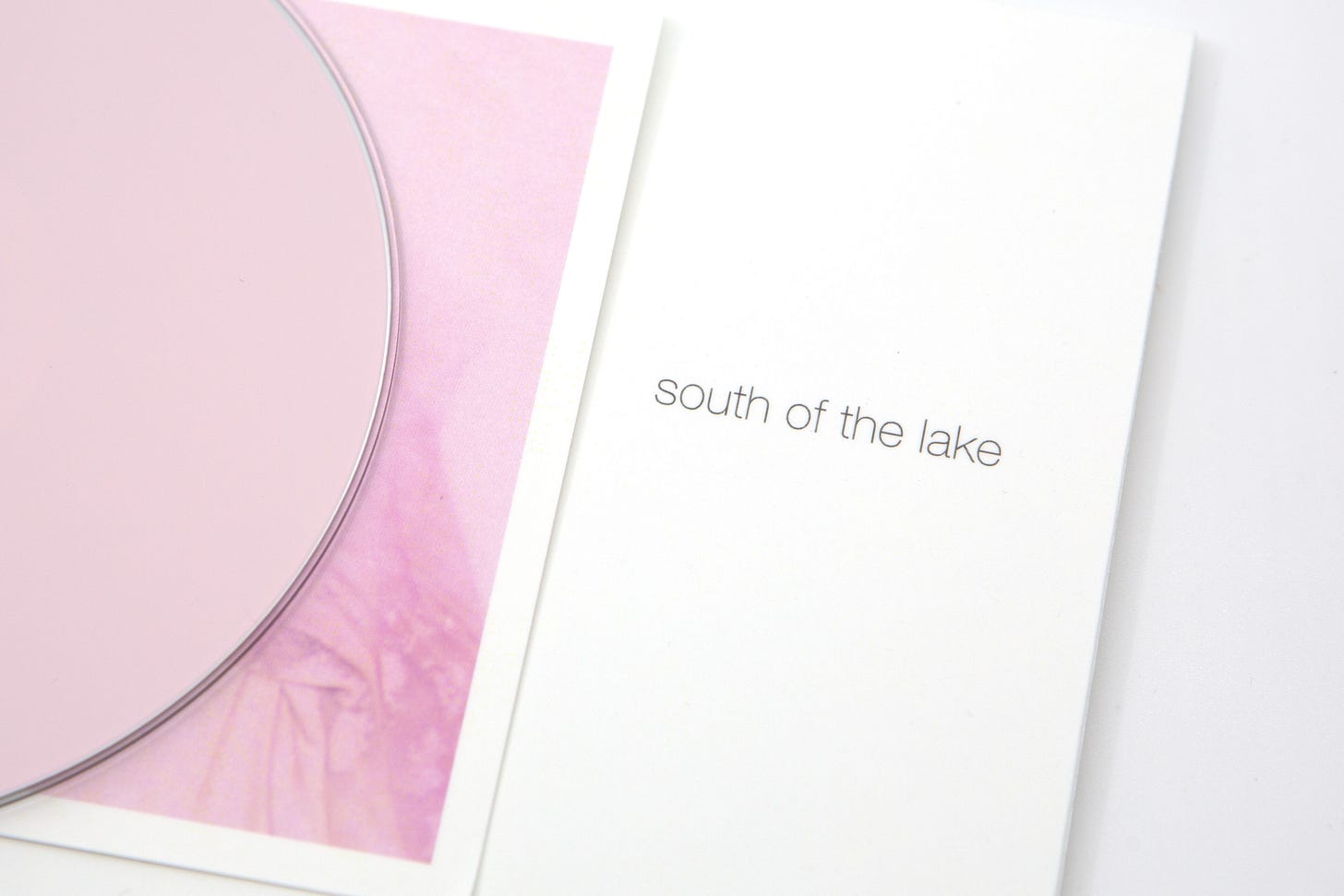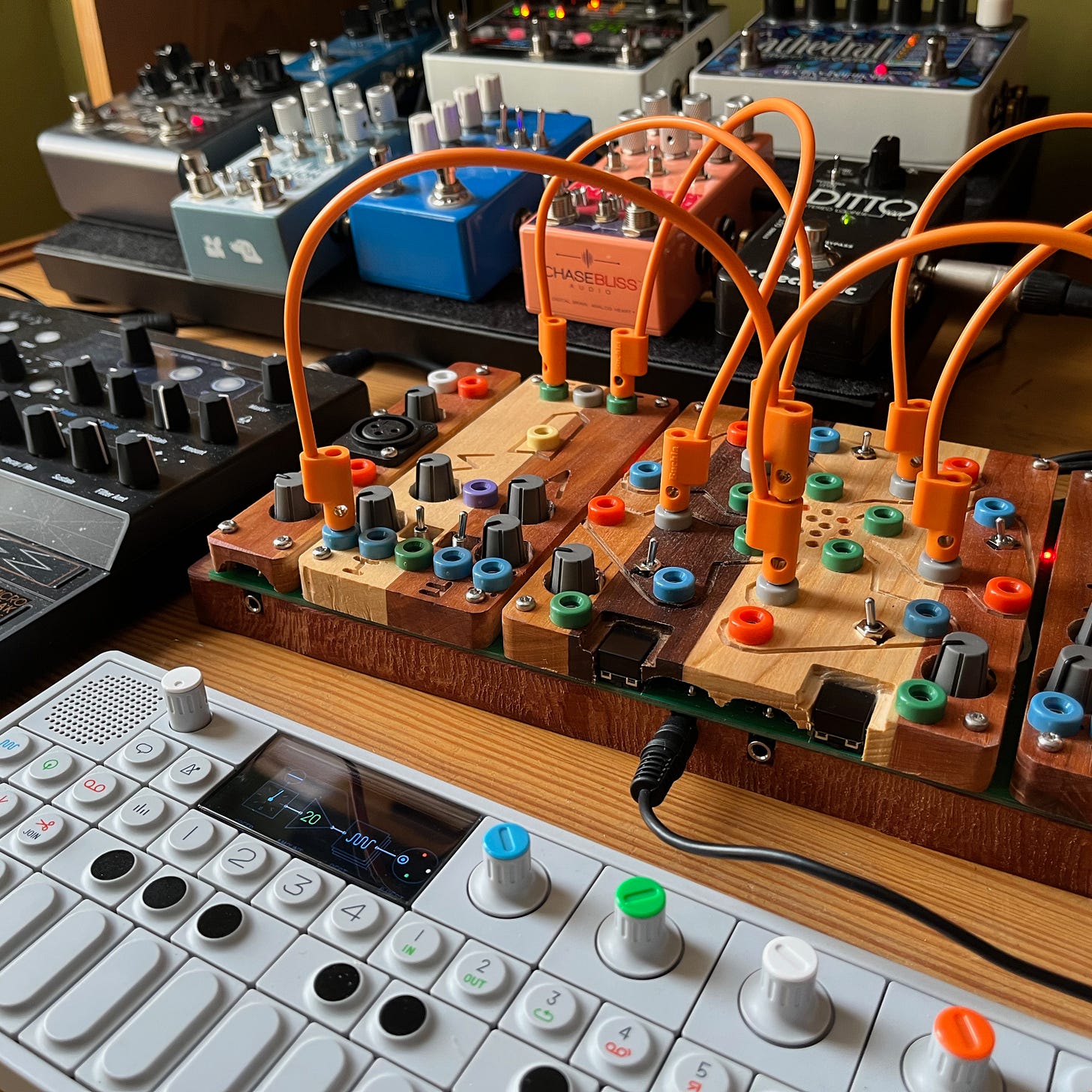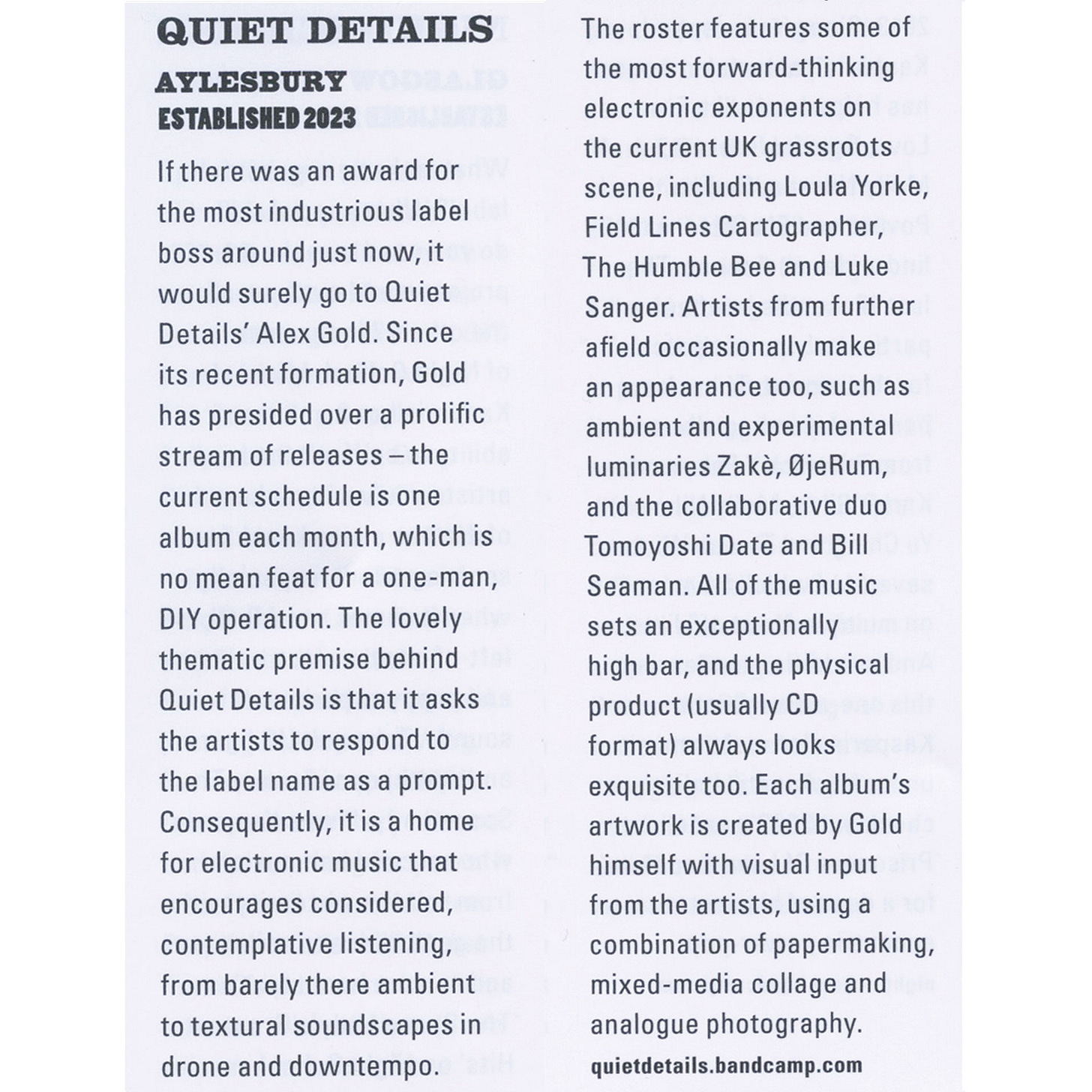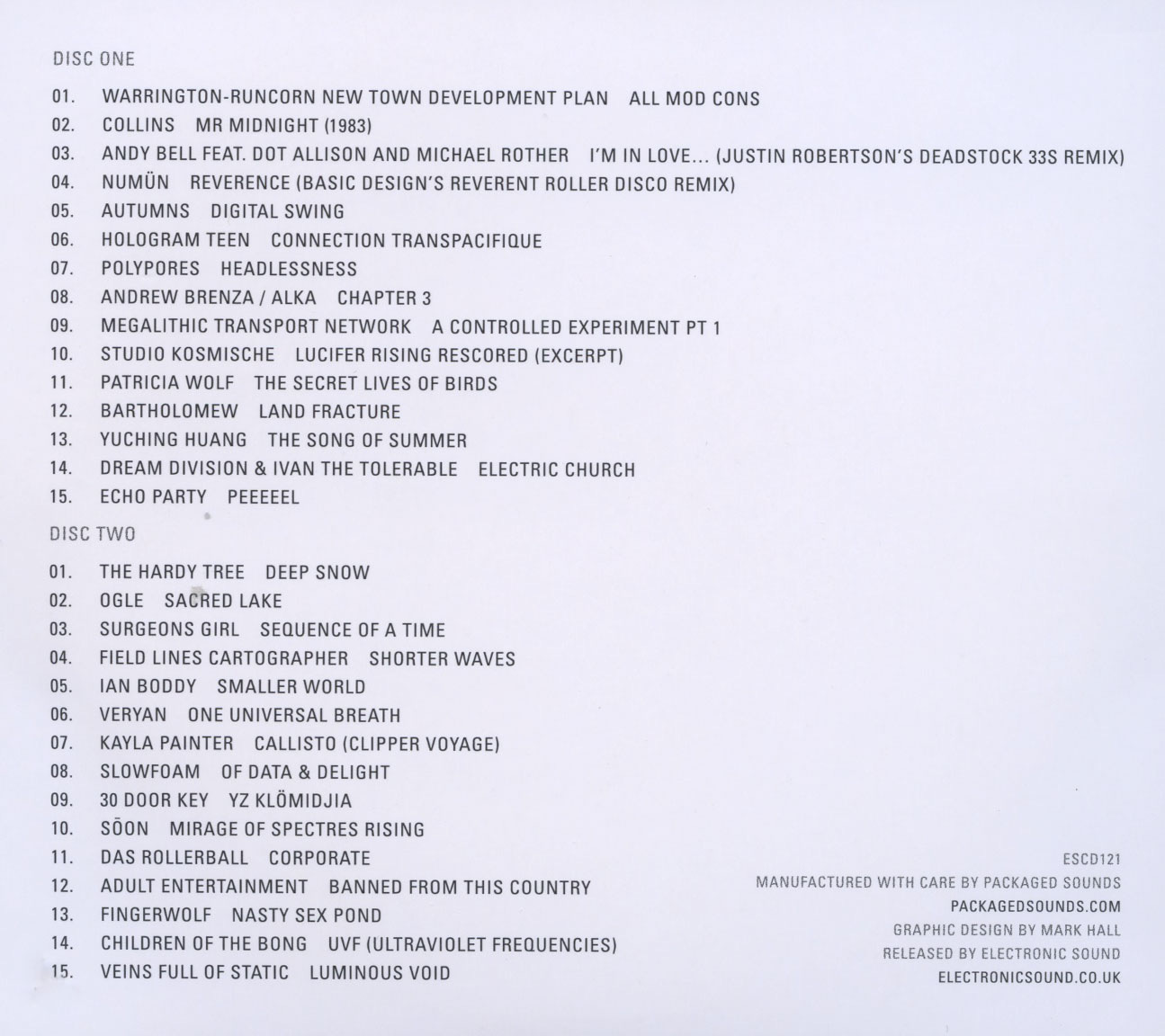Awesome party last night! Wil Bolton Q&A Part One today
News of quiet details coverage and interview in Electronic Sound Mag too x
Hi friends - hope all good :)
Well I was hoping Wil’s first party would be a good one, and you certainly delivered!
Such good vibes, full of positivity and support - and loads of love of Wil’s album - so huge thanks for making it so special for him!
Great to see so many people picking up the CD too, thank you! Remember to message me for the long-form version of the album - music like this deserves to be listened to from the beginning to the end, that’s exactly why we do the extended version. Also as something special as an extra thanks for investing in physical music x
CDs still left and digital still half-price
Now for Part One of our Q&A - enjoy!
Please tell us a bit about your background and history in music
I learned some piano, guitar and flute as a child and played rhythm guitar in a few bands as a teenager, but my interest in creating more experimental electronic music really developed when I borrowed a four track cassette recorder and drum machine from a friend in the mid 90s and started playing around and building tracks with those along with my guitar, a couple of toy keyboards and a distortion pedal. I later picked up a second hand Roland MC-303 groove box and gradually added more bits of hardware as my interest and obsession grew - a couple of rack synths and effects, a mixer, a digital multitrack recorder and an Akai MPC2000XL sampler. After a few more years I added a laptop to my setup and started using software synths and effects plugins.
My first official releases from 2004 onwards were under the name Cheju, glitchy melodic electronica and IDM. Most of my work at that time was centred around beats and MIDI programming, but I liked to make my own drum samples, often recording things like household objects, vinyl crackle, old camera shutters and broken hard drives. Occasionally I would throw in a more ambient track and incorporate field recordings into my work. I gradually became more interested in textures and drones and started making more field recordings and from 2007 I began making sound art works and installations and exhibiting in art galleries.
Then in 2009 I bought Ian Hawgood’s Wolfskin album, the first release on the wonderful Hibernate Recordings, now sadly hibernating. I had already known Ian for a few years then and we’ve become very good friends. That CD purchase was a pivotal point for me as it began a dialogue with Hibernate owner Jonathan Lees, who already knew my work as Cheju and asked me to work on an album for Hibernate. This was the prompt for me to work on something fully beatless and ambient. Around this time my laptop also died on me and I returned to my digital multitrack recorder and moved away from the grid, using looper and effects pedals with analogue synths, guitars and various acoustic instruments to layer asynchronous loops and textured webs of sound with no rigid tempo or structure.
That release on Hibernate, Time Lapse came out in 2010 and was my first under my own name and since then I’ve been privileged to have released on a host of amazing labels, including Ian’s fantastic Home Normal, Dronarivm, Laaps, Hidden Vibes, Krysalisound, Audiobulb, Past Inside The Present, Courier, Time Released Sound, Dauw and Sound In Silence.
Please can you describe a bit about your general philosophy and process as an artist?
My work is predominantly inspired by specific places, so each project tends to begin with explorations of a certain area or site, during which I will make extensive field recordings and photography. Once back in the studio, I’ll use these as source materials and inspiration.
On beginning an album, I will select from my collection of gear and put together a setup which I will use for the entire project. I have a modular synth case which is always set up, but I also have too many keyboards, synths, guitars, pedals and small acoustic instruments and not enough space to have them all wired up at all times. I also find having everything at hand quite overwhelming, preferring the inspiration of a more limited selection of tools. And I greatly enjoy the process of choosing a new combination of instruments and effects each time, selecting what I think will work best for conveying the mood and atmosphere required for each project.
My composition process is quite improvisational, usually starting with playing around with a modular patch or layering guitar notes and chords into a looper pedal, always inspired by the field recordings. I play my loops through other time- based pedals such as delays, reverbs and more glitchy and pitch-shifting effects, as I like the interplay of repetition and subtle variation.
I’ll layer several loops or longer passages of different instruments until I’m happy with the result and I always use loops of different length, not synchronised to each other or any tempo, so they drift and evolve. I do very little editing and work very minimally in the box, just using the computer more as a multitrack recorder and mixer, although I do spend longer than I’d like obsessing over the final mixes!
What does quiet details mean to you and how did you use that to approach this album?
For me quiet details means those small comforting details of everyday life, those sounds, images and textures that we often take for granted or overlook but that can offer such delight and solace if we can find the time to slow down and immerse ourselves in them.
I began work on this album after a hectic period for both myself and my partner Soo, while she was driving us on a fantastic road trip around the Jeolla province of South Korea in Spring 2023. The old name for this region is Honam, which translates to south of the lake, giving the album its title. Soo is originally from Seoul and was over there for work. I flew out to meet her after her work finished and we spent a fortnight travelling around and immersing ourselves in nature, including a stay in a buddhist temple and visits to a tea garden and nature reserve. It was a rejuvenating experience and I recorded many sounds with my handheld field recorder and also collected some small found objects - stones and tiny pine cones as well as a singing bowl, some tiny bells from a flea market and buddhist rosaries.
Part Two next week :)
Now shout-outs:
Brilliant edition of Electronic Sound Mag this month, focusing on Grassroots Electronica 2025 - they kindly asked me to join the industry panel round table for key figures in the UK alongside the likes of Daniel Miller , Deb Grant, Aly Gillani, Karl O-Connor, Gordon Chapman-Fox, NikNak, Kate Bosworth and other inspiring people - it’s wonderful to read their thoughts and know there are so many good people pushing against the tide of rampant commercialism - we’re stronger together :) x
quiet details also featured on the 25 most ambitious independent labels in the UK, a Veryan track on the cover CD, and a Sanger and Sanger review.
So much love to them for the support for not just qd, but all the others out there doing what they do - subscribe to ES (print ideally and also online) and support other labels/musicians however you can!
https://www.electronicsound.co.uk
Also shout to Space is Place for playing a track from Wil’s album!
Sending all the love to out friends in LA - here's a resource for those affected (from James Bernard)
MALAN Fire & Wind Storm Resources
Much love friends and thanks again for the support - current top of the Bandcamp ambient charts and sixth overall any format/genre on the platform!
I mentioned it briefly at the party last night, next week have some news of fields we found music coming very soon, preceding my upcoming quiet details album - very much looking forward to sharing all this with you and the story behind it - more soon x
Much love and have a great weekend
Alex
quietdetails.com
quiet details Bandcamp
quiet details Substack
quiet details studios - mastering and audio services











